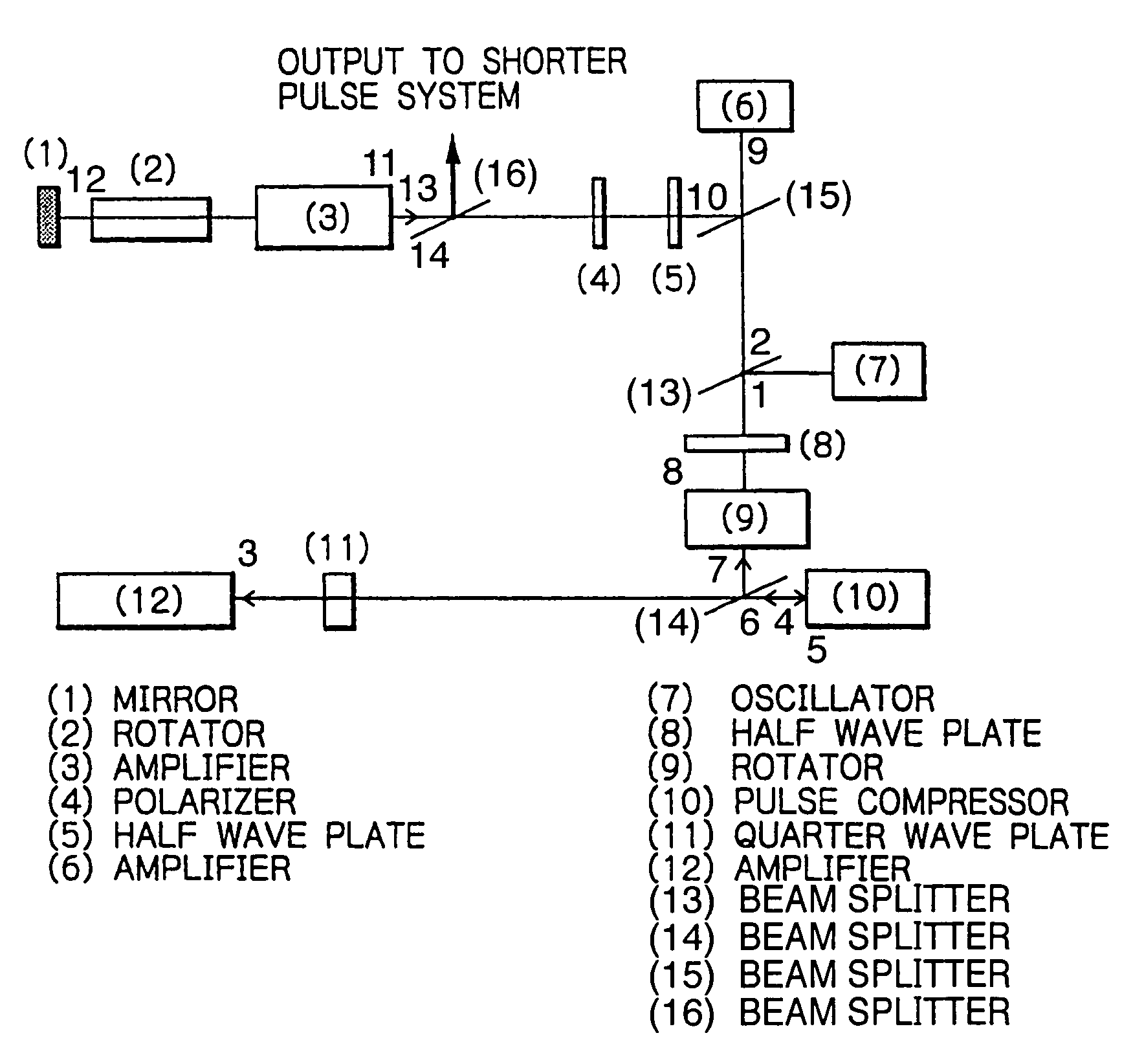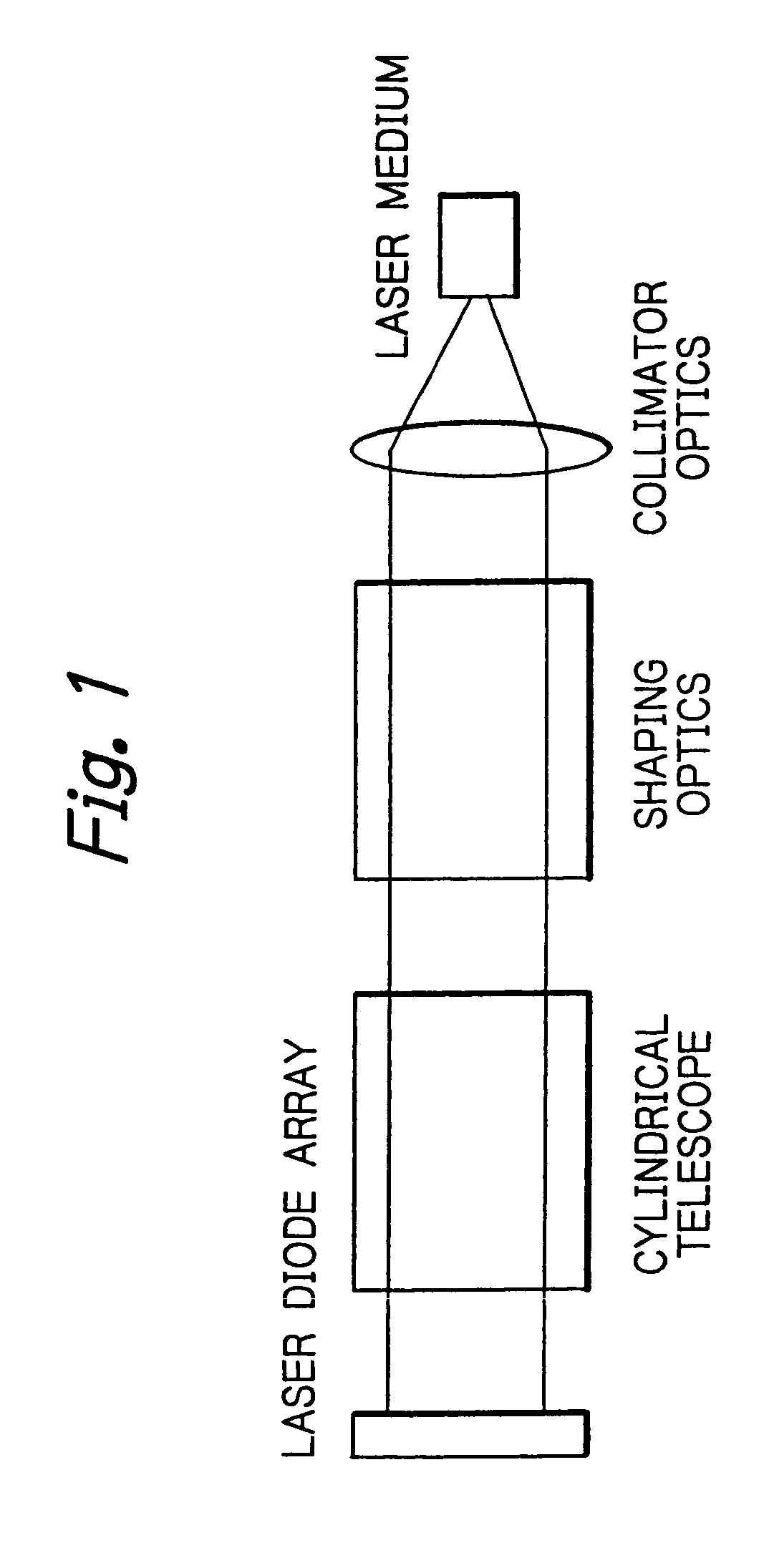Systems for generating high-power short-pulse laser light
- Summary
- Abstract
- Description
- Claims
- Application Information
AI Technical Summary
Benefits of technology
Problems solved by technology
Method used
Image
Examples
example 1
Acquisition of Optical Data for the Compression of SBS Pulses
[0083]SBS compression was performed with two cells used to prevent SRS. The gain of two passes as calculated from the amplification characteristics for two passes was 2.3. As shown in the graph on the right side of FIG. 7, the pulse duration as obtained when the condensing optics in the above-described pump laser configuration had a focal length of f-15 mm was 320 ps in terms of FWHM.
example 2
Acquisition of Optical Data for Raman Amplification and Compression
[0084]The threshold for SRS with Ba(NO3)2 was measured by the beam waist reflection method using a setup of the layout shown in FIG. 8, with a mirror placed at the half beam waist. With varying values of excitation intensity, gain g was determined to be g˜10 cm / GW with crystal length of 300 mm. Based on this data, compressing pump pulses of about 100 ps was assumed and the laser beam was so issued as to have a half waist at the reflecting face (exit end) of the crystal. Channeling due to self-focusing might damage the reflective coating at the exit face of the crystal and the expected intensity of the damage is about 2–2.5 GW / cm2 for the given value of pulse duration.
[0085]Optical design must therefore be made to provide values not exceeding the calculated damage intensity. The threshold for SRS with Ba(NO3)2 given such design values was about 30 kW. The multiplication factor was M˜40. The cross-sectional area of the...
example 3
Producing Shorter Pulses with Laser System
[0090]In a semiconductor pumped by all-solid Nd:YAG laser oscillator, a Cr:YAG crystal was inserted as a supersaturation absorber and by pumping with a 100 W, 300 μs semiconductor laser, 600 μJ laser light was produced as a sequence of 3 ns pulses. This light was amplified with a first preamplifier and compressed to a pulse duration of about 0.3 ns in a SBS pulse compressor. The compressed pulses were fed into the first preamplifier and amplified to an energy of 1.5 mJ in the form of 0.35 ns pulses. The light was further amplified in a second preamplifier to a pulse energy of 6 mJ in the form of 0.32 ns pulses. Finally, the light was subjected to 4-pass amplification in a master amplifier which was a 1200 W semiconductor laser (120 A, 300 μs, 100 Hz), thereby producing 32 mJ short-pulse pump light having a pulse duration of 0.3 ns.
[0091]The short-pulse pump laser light (λ=1061 nm) was introduced into a Raman amplifier / compressor comprising a...
PUM
 Login to View More
Login to View More Abstract
Description
Claims
Application Information
 Login to View More
Login to View More - R&D
- Intellectual Property
- Life Sciences
- Materials
- Tech Scout
- Unparalleled Data Quality
- Higher Quality Content
- 60% Fewer Hallucinations
Browse by: Latest US Patents, China's latest patents, Technical Efficacy Thesaurus, Application Domain, Technology Topic, Popular Technical Reports.
© 2025 PatSnap. All rights reserved.Legal|Privacy policy|Modern Slavery Act Transparency Statement|Sitemap|About US| Contact US: help@patsnap.com



